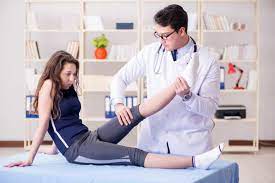Introduction:
Sports are exhilarating, whether you’re on the field, court, or track. However, with the thrill of competition comes the risk of injury. Whether you’re a professional athlete or a weekend warrior, encountering a sports injury can be a daunting experience. Fortunately, advancements in medical technology have made sports injury surgery a viable option for many athletes looking to get back to doing what they love.
Understanding Sports Injury Surgery:
Sports injury surgery encompasses a range of procedures designed to repair damage sustained during athletic activities. From torn ligaments to fractured bones, sports injury surgery aims to restore function and mobility to affected areas, allowing athletes to return to their chosen sport with confidence.
Common Types of Sports Injury Surgery:
1. ACL Reconstruction: Anterior Cruciate Ligament (ACL) tears are a common injury among athletes, particularly those who participate in high-impact sports like soccer, basketball, and football. ACL reconstruction surgery involves replacing the torn ligament with a graft, typically taken from the patient’s own body or a donor.
2. Rotator Cuff Repair: The rotator cuff is a group of muscles and tendons in the shoulder that can become damaged due to repetitive motion or trauma. Rotator cuff repair surgery aims to reattach or strengthen these tissues, restoring stability and function to the shoulder joint.
3. Meniscus Repair: The meniscus is a rubbery cartilage that cushions the knee joint. Tears in the meniscus can occur during twisting or pivoting movements, common in sports like basketball and football. Meniscus repair surgery may involve trimming away damaged tissue or stitching torn edges back together.
4. Fracture Repair: Fractures are breaks in the bone that can sideline athletes of all ages and skill levels. Depending on the severity and location of the fracture, surgery may be necessary to realign the bone fragments and promote healing.
Recovery and Rehabilitation:
While sports injury surgery is a crucial step in the recovery process, it is only the beginning of the journey back to full athletic performance. Rehabilitation plays a vital role in restoring strength, flexibility, and range of motion to the injured area. Working closely with physical therapists and athletic trainers, athletes can gradually reintroduce activity, building towards a safe and sustainable return to sport.
The Road to Recovery:
Recovering from a sports injury can be challenging, both physically and emotionally. However, with the right treatment plan and support system in place, athletes can overcome adversity and emerge stronger than ever. Whether you’re dreaming of a return to the professional arena or simply eager to get back on the field with friends, sports injury surgery can help turn that dream into a reality.
Conclusion:
Sports injury surgery is a valuable tool in the treatment and rehabilitation of athletic injuries. By addressing underlying damage and restoring function to affected areas, surgeons can help athletes get back to doing what they love with confidence and peace of mind. So, if you find yourself sidelined by a sports injury, remember that help is available, and a full recovery may be closer than you think.





Comments